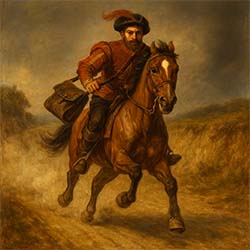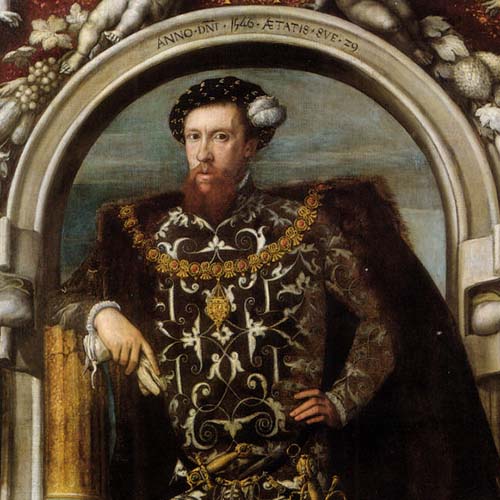The Meaning of Sic Parvis Magna
As I worked through the early drafts of my historical fiction Adventures of Francis Drake series, one phrase remained central to my research: Sic Parvis Magna. I was after an origin story that filled in the gaps of his childhood and early adulthood, trying to color in the details of experiences that transform Francis Drake from the man to a naval legend. The Heralds College inscription on his coat of arms brilliantly encapsulates Drake’s journey: from a modest upbringing in turbulent Tudor England, he clawed his way to greatness — or infamy, depending on who tells the story. This audacity is at the core of my historical fiction novel Sic Parvis Magna.
Sic Parvis Magna Meaning
Perhaps part of why sic parvis magna has enduring appeal is because the Latin phrase is a little resistant to a single perfect translation. Such a short statement would typically be a part of a larger excerpt which would help define it better. Sic Parvis Magna is commonly translated as from small things, greatness. We also see it translated as greatness from small beginnings and similar translations.
The ambiguity gives me a little creative license to attempt to breathe life into the story, while staying as true to the history as possible. This is why Sic Parvis Magna is the first book of the historical fiction series Adventures of Francis Drake. It was impossible to name the origin novel anything other than this, it was the title from the very first prick of the idea.
Explore how I define the meaning sic parvis magna in the book.
Drake’s Humble Beginnings—and End Fit for a Historical Fiction Saga
The small beginnings part of the motto lives up to the expectations it sets.
We don’t, for example, have Drake’s parish’s birth record and are left to guess at his birth year (it is frequently cited as 1540, but there are other estimates). The barn of the Drake’s Tudor era Crowndale Farm in Tavistock is in a sad state but is one of the few buildings still standing (the farm house was demolished in 1850.) (Turner, n.d.) (Bett & Channon, 2018).
The first historical record mentions of Drake are in the Spanish records, around the time of the infamous raid on the isthmus of Panama.
Little factual evidence of Drake’s early years creates a great amount of space to ask what kind of a young man could later become both England’s hero and the pirate scourge of Spain. Philip II, the king of Spain put a 20,000 ducat price on Drake’s head, and he became known as “El Draque”—The Dragon. This translates to roughly $4.5M based on the ducat’s weight in gold at today’s prices.
As Kelsey puts it, here was a Devon farm boy that not only becomes a pirate, but the most successful pirate in history. The rogue is welcomed in the Tudor court and becomes one of Elizabeth’s favorites.
His death, recorded in 1596 off the coast of Portobello, Panama—while leaving no marker, has left a legend. Drake was buried at sea, in full armor, in a lead coffin which was never recovered despite several expeditions in the 20th and 21st centuries using modern underwater salvage techniques.
The Politics of Drake’s Knighthood and Coat of Arms
The Latin motto—sic parvis magna—appears on Drake’s coat of arms. Sir Francis was famously granted a knighthood by Elizabeth I (Tudor) on the deck of his galleon the Golden Hind on the official (political) completion of his circumnavigation. At that point in time, the relationship between Spain and England was strained. An official (English) acknowledgement of the circumnavigation (and the plunder it brought into England) was tantamount to official endorsement of piracy, and would be seen as an English provocation.
In a masterful political stroke, while holding the sword for the dubbing, Elizabeth made a joke about her thoughts of taking Drake’s head off, then suddenly gave the sword to the French ambassador who stood next to her. It was actually the French ambassador that dubbed Francis Drake. Elizabeth’s move demonstrated French support for England and for Drake’s action to Spain’s ambassador Mendoza—muddying the water as to whether it was piracy (France and Spain were warring for much of their early modern history).
I explore the behind-the-scenes political drama and high seas adventures of Sir Francis Drake’s circumnavigation in the third historical fiction novel of the series, the upcoming Nova Albion Adventure. The trip was initiated in secrecy, and a strong faction of the court (including Cecil) opposed it because he feared it would provoke a war with Spain.
The knighthood allowed Drake to have a coat of arms. However, there is some evidence that suggests that another branch of the Drakes objected vehemently to the use of their current Drake Dragon coat of arms.
Preferring to avoid more domestic enemies, Elizabeth makes another signature compromise, granting him a new coat of arms—of the ship circumnavigating the globe, pulled by a rope held in God’s hand. The Latin inscription auxilio divino means “with God’s help.” Sic parvis magna was the inscription beneath the drawing.
Final thoughts on Sic Parvis Magna
Sic Parvis Magna—from small beginnings, greatness—captures not just Sir Francis’s humble beginnings and achievement, but foreshadows England’s transformation from a small island into a global naval empire and some 300-400 years of English maritime supremacy.
Learn More about My Historical Fiction Stories
Learn more about the upcoming historical fiction novel Sic Parvis Magna and the Adventures of Francis Drake series.
- Character Sketch of Francis Drake
- Character Sketch of James Reynard
- Character Sketch of Captain Guichenot
Further Reading
Bett, J., & Channon, M. (2018, 09 16). Sir Francis Drake’s birthplace is now a crumbling ruin. Retrieved from PlymouthLive: https://www.plymouthherald.co.uk/news/plymouth-news/sir-francis-drake-birthplace-ruins-2045898
Kelsey, H. (1998). Sir Francis Drake. New Haven: Yale University Press.
Sugden, J. (1990). Sir Francis Drake. New York: Henry Holt and Company.
Turner, M. (n.d.). In Drake’s Wake. Retrieved from In Drake’s Wake: http://www.indrakeswake.co.uk













